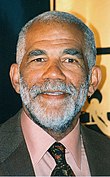User:Alxt
Hey Hey! Perfect homepage for me, feel free to help make it better...
All The Useful Stuff I Need
Open TasksYou can help improve the articles listed below! This list updates frequently, so check back here for more tasks to try. (See Wikipedia:Maintenance or the Task Center for further information.) Fix spelling and grammar
Fix wikilinks
Update with new information
Expand short articles
Check and add references
Fix original research issues
Improve lead sections
Add an image
Translate and clean up
Help counter systemic bias by creating new articles on important women. Help improve popular pages, especially those of low quality.
Featured Article of the DayEd Bradley (1941–2006) was an American broadcast journalist best known for reporting with 60 Minutes and CBS News. Bradley started his television news career in 1971 as a stringer for CBS at the Paris Peace Accords. He won Alfred I. duPont and George Polk awards for his coverage of the Vietnam War and the Cambodian Civil War. Returning to the United States, he became CBS's first Black White House correspondent. Bradley joined 60 Minutes in 1981 and reported on more than 500 stories with the program during his career, the most of any of his colleagues. Known for his fashion sense and disarming demeanor, Bradley won numerous journalism awards for his reporting, which has been credited with prompting federal investigations into psychiatric hospitals, lowering the cost of drugs used to treat HIV/AIDS, and ensuring that the accused in the Duke lacrosse case received a fair trial. He died of lymphocytic leukemia in 2006. (Full article...)
Recently featured:
Picture of the DayCirsium palustre, the marsh thistle, is a herbaceous biennial (or often perennial) flowering plant in the family Asteraceae. It is native to Europe, where it is particularly common on damp ground such as marshes, wet fields, moorland and beside streams. In Canada and the northern United States it is an introduced species that has become invasive. It grows in dense thickets that can crowd out slower growing native plants. Cirsium palustre can reach up to 2 metres (7 ft) in height and features strong stems with few branches which are covered in small spines. In its first year the plant grows as a dense rosette and in subsequent years a candelabra of dark purple or occasionally white flowers, 10–20 millimetres (0.4–0.8 in) with purple-tipped bracts. In the northern hemisphere these are produced from June to September. The plant provides an important source of nectar for pollinators. This C. palustre flower was photographed in Niitvälja, Estonia.Photograph credit: Ivar Leidus
|
Articles I Have Written
Articles I Have Improved
Wikipedia Useful Stuff
|
Inspired by fine work from User:Siroxo


